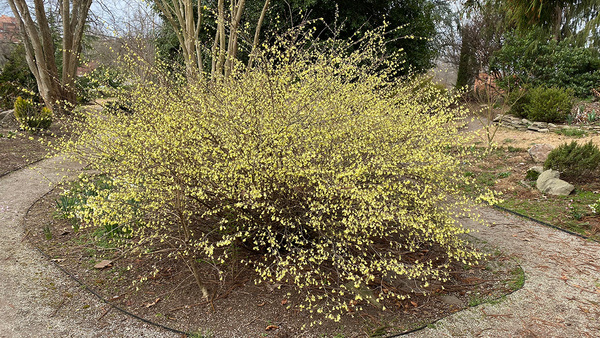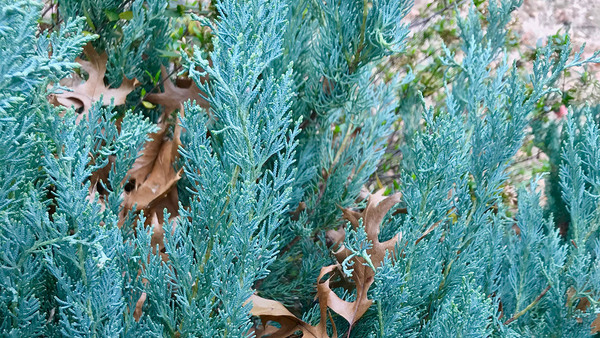
When I give tours of the State Botanical Garden of Tennessee in Knoxville, I always make a stop at our Delavay’s schefflera (Schefflera delavayi, Zones 7–11). “Who knows the houseplant schefflera?” I ask. Some know of it and some don’t, but everyone is awestruck by this big, bold, broad-leaved, evergreen shrub.
Cousin to a houseplant favorite
Every interior-plant enthusiast is familiar with the dwarf umbrella tree (Schefflera arboricola, Zones 10–12), a houseplant known for being able to withstand neglect. That Taiwanese plant, however, is quite tropical and would not withstand our Southeast winters. If you are looking for a plant to stump the neighbors, try your hand at this hardier version that is becoming more available to gardeners.
Taxonomy and distant relatives
The taxonomy of Schefflera is kind of crazy, filled with different kinds of plants that are dense to wade through. Schefflera is in Araliaceae, a family of flowering plants that includes Japanese aralia (Fatsia japonica, Zones 8–10) and rice-paper plant (Tetrapanax papyrifer, Zones 8–11). My general opinion is that even expert gardeners in the Southeast are still at the beginning of exploiting this plant family for garden worthiness.

Not as tender as you might think
Delavay’s schefflera is native to the varied landscapes of southwestern China. I first encountered it around a decade ago in the Pacific Northwest. At first I shrugged it off as most likely only growable in the gardening wonderland of that region. Fate or naivete intervened, and I bought 20 or so plants and distributed them to friends. Lo and behold, most of those plants are still alive, primarily in USDA Hardiness Zone 7.
Providing the proper conditions and care
I do think gardeners in the Southeast could get away with growing Delavay’s schefflera in colder zones with winter protection. However, Zone 7 and above seems to be more ideal. Plants will prefer well-drained soil, adequate moisture, and dappled shade most of the day. Survivability will be higher in the Southeast if you can find a way to spring plant. This will give plants ample time to establish before colder temperatures settle in. After a few years of establishment, plants will be more drought tolerant and will need little care.

Multiple seasons of interest
Delavay’s schefflera is a four-season plant. In spring new foliage emerges, covered in a woolly down of gray-brown tomentum (fuzzy hairs). This covering, which protects new leaves, sheds as leaves mature. Older plants will reward gardeners with outstanding bloom stalks in the fall. Blooms are almost otherworldly and arch high above broad foliage.
A vigorous grower in the right spot
Delavay’s schefflera is not a sure thing for gardeners in the Southeast. However, if you find just the right spot, it will have a chance to thrive. You will find the plant at many mail-order sources as well as at some independent garden centers. Give it some space in your garden; I have seen it grow 5 feet tall and 5 feet wide in 10 years here. Scheffleras aren’t just for the sunroom—you can have one in your landscape as well.
—Andy Pulte is a faculty member in the plant sciences department at the University of Tennessee.
Fine Gardening Recommended Products

Scotts Cordless Grass-Shear/Shrub-Trimmer Combo
Fine Gardening receives a commission for items purchased through links on this site, including Amazon Associates and other affiliate advertising programs.
- 13.5 x 3 x 5 inches
- Uses a 7.2-Volt 2Ah high-capacity built-in lithium-ion battery; Includes a fast charger

ARS Telescoping Long Reach Pruner
Fine Gardening receives a commission for items purchased through links on this site, including Amazon Associates and other affiliate advertising programs.



















Comments
Log in or create an account to post a comment.
Sign up Log in